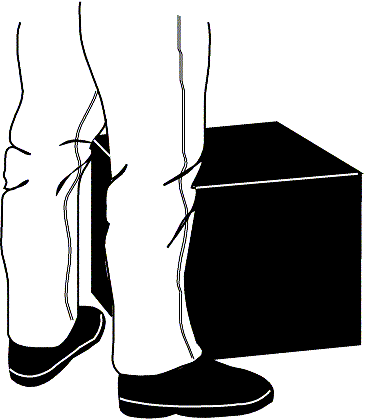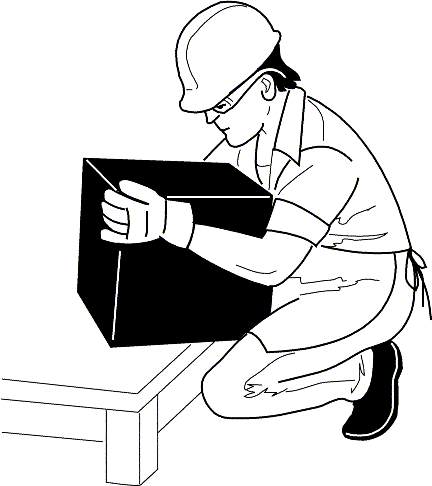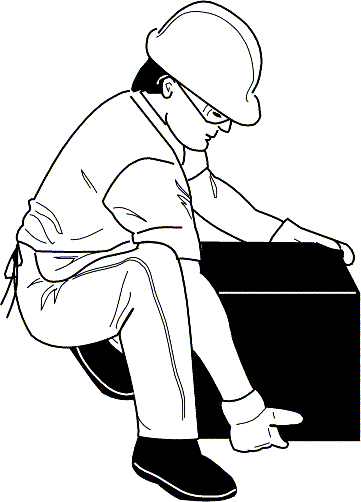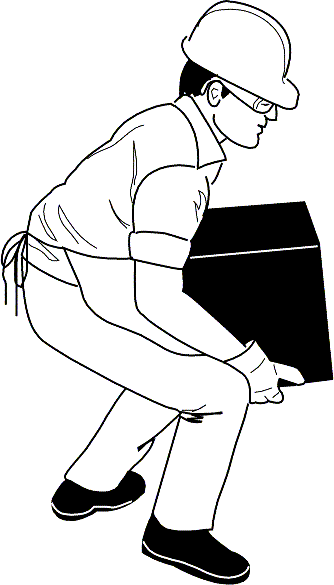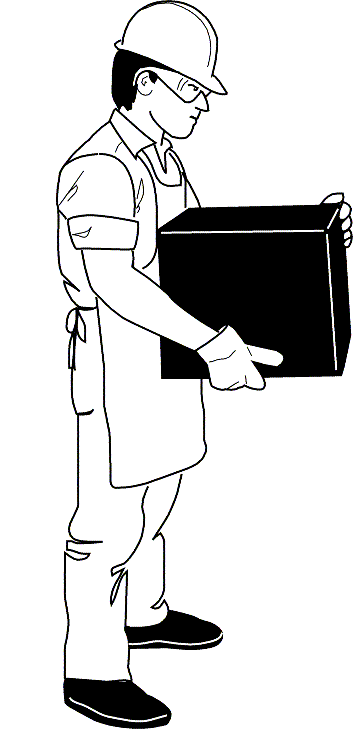We hear it all the time at Doroski Chiropractic Neurology in Woodbridge VA… “Don’t worry Doc I have a back brace I wear while I am at work.” Just because you are wearing one doesn’t mean you are free from harming your back and does wearing one incorrectly even help. No one really thinks about wearing one correctly you figure it is a belt how can I do it wrong. Well I can tell you from personal experience you can do a lot of things wrong that you figured there really is only one way to do it. Take running for example. A few years ago I got in to running and figured I have been doing this for years “I think I got this.” It always feels good busting your butt getting ready for your first half marathon and at mile two the person you signed up to do it with, but never ran with, who happens to be a track coach goes “wow you are doing it wrong.” I bet after each run your shins are killing you and your back is tight. Why yes it is. Yea try doing this this and this. Next thing you know you are running easier and faster. So trust me just being handed a back brace doesn’t mean “you got this.”
So let me give you some background on back braces and do they really help.
The truth is that wearing an elastic or other support around your waist to help your back may be both good and bad. And whether wearing such a back belt will prevent back problems is controversial. A new study that found workers who routinely wear these support belts while working at Wal-Mart, were just as likely to injure their backs as those who did not.(1) However, some previous studies have shown back belts to prevent injuries, such as the UCLA study conducted with Home Depot workers, which found a 1/3 decrease in back injuries due to wearing back belts.(2)
Let’s look at the scientific evidence about whether back belts might help to support the back, whether there are any risks associated with wearing them, and whether such belts should be recommended or not.
How might back belts help to support the back? They do not hold the back in, as many presume. Back belts function primarily to hold the stomach in, thus increasing intra-abdominal pressure. This has led some to refer to these belts as abdominal belts rather than as back belts. But how does increasing intra-abdominal pressure support the spine? We will briefly review the intra-abdominal balloon theory and a more modern theory.
Intra-Abdominal Balloon Mechanism
It was originally proposed by Bartelink in 1957 that increased intra-abdominal pressure would decrease the compressive load on the spine through the intra-abdominal balloon mechanism.(3) To begin with, you must think of the abdominal cavity and the abdominal organs as a squishy liquid. Then realize that the abdominal cavity becomes a closed chamber when we bear down and hold our breath, which we instinctively do when we lift heavy things. This chamber is closed on the bottom by the anal sphincter and on the top by the diaphragm. When bearing down, the abdominal contents tend to push outwards. But if we contract our deep abdominal muscles—the obliques and the transverse abdominus muscles—or we wear a thick belt, the abdominal contents are forced upwards rather than outwards.(4 p.109) This theoretically provides a decompressive effect on the lumbar spine. Since the crura of the diaphragm is attached to the first 3 lumbar vertebrae, when the diaphragm is pushed upwards, it exerts a traction force on the lower lumbar spine (L4 and L5). It was also theorized that since this balloon mechanism makes the spine more rigid, it would decrease the amount of work required of the erector muscles to prevent us from falling forwards. Kapanji estimated that this abdominal support mechanism acts to reduce compression forces on the L5/S1 disc by 30% and reduces the force required by the erector spinae muscles by 55%. (4, p.198).
But more recent scientific evidence fails to support some of these theoretical assumptions. Such recent studies reveal that an increase in intra-abdominal pressure actually results in an increase (rather than a decrease) in compressive force on the lower spine.(5,6) And there is no decrease in the amount of work required of the lower back muscles.(7) However, by stiffening the trunk, increased intra-abdominal pressure may prevent the tissues in the spine from strain or failure from buckling. Such intra-abdominal pressure may also act to reduce anterior-posterior shear loads.(8) In other words, support for the spine is provided, without reducing compression to any appreciable degree.
Belts may also help to protect the spine by limiting the range of motion that occurs when bending or twisting, though this effect is less than expected.(9,10) However, since when the spine bends more, it is more vulnerable to injury, if these belts reduce extreme bending at all, they may be beneficial.
Are there any risks associated with wearing a back belt?
The main risk associated with wearing a back belt is that during the period of wearing it, the supportive spinal muscles—the deep abdominal and back muscles—that normally support your spine will become weaker. These muscles are less active while your spine is being artificially supported by the belt. Muscles need to be consistently exercised in order to stay strong. If these muscles become weaker, when you stop wearing the belt, you may be more likely to hurt your back. And at least one study seems to suggest this. In this study, there was an increase in the number and severity of back injuries following a period of belt wearing.(11)
Another risk associated with wearing a back belt is that it causes an increase in both blood pressure and heart rate.(12) This may pose a problem for those individuals with existing cardiovascular disease or risk factors, such as hypertension.
A third risk associated with wearing a back belt is that workers may be inclined to lift heavier objects while wearing them. These belts may be giving workers a false sense of security. This could result in an increased risk of injury.
REFERENCES:
Wassell JT, Gardner LI, Landsittel DP, Johnston JJ, Johnston JM. A prospective study of back belts for prevention of back pain and injury. JAMA. 2000; 284(21): 2727-32.
McIntyre DR; Bolte KM; Pope MH. Study provides new evidence of back belts’ effectiveness. Occup Health Saf. 1996; 65(12): 39-41.
Bartelink DL, “The Role of Abdominal Pressure in Relieving Pressure on the Lumbar Intervertebral Discs,” J Bone Joint Surg, (Br) 1957, 39B: 718-725.
Kapanji, IA. The Physiology of the Joints, Vol. III.
McGill SM, Norman RW. Reassessment of the role of intra-abdominal pressure in spinal compression. Ergonomics. 1987; 30: 1565-1588.
Nachemson AL, Anderson GBJ, Schultz AB. Valsalva maneuver biomechanics. Effects on lumbar spine trunk loads of elevated intrabdominal pressures. Spine. 1986; 11: 476-479.
McGill S, Norman RW, Sharatt MT. The effect of an abdominal belt on trunk muscle activity and intra-abdominal pressure during squat lifts. Ergonomics. 1990; 33:147-160.
McGill S. Abdominal belts in industry: A position paper on their assets, liabilities and use. Am Ind. Hyg. Assoc. J. 1993; 54(12): 752-754.
Lantz SA, Schultz AB. Lumbar spine orthosis wearing I. Restriction of gross body motion. Spine. 1986; 11: 834-837.
McGill SM, Sequin JP, Bennett G. Passive stiffness of the lumbar torso in flexion, extension, lateral bend and axial twist: The effect of belt wearing and breath holding. Spine. 1994; 19(19): 2190-2196.
Reddell CR, Congleton JJ, Huchinson RD, Mongomery JF. An evaluation of a weightlifting belt and back injury prevention training class for airline baggage handlers. Appl. Ergonomics. 1992; 23: 319-329.
Hunter GR, McGuirk J, Mitrano N, et al. The effects of a weight training belt on blood pressure during exercise. J Appl Sport Sci Res. 1989; 3: 13-18.
+scottdoroski3122/posts
+doroskichiropractic3122/posts
Doroski Chiropractic Neurology
3122 Golansky Blvd, Ste 102
Woodbridge VA 22192
703 730 9588
Maplink

